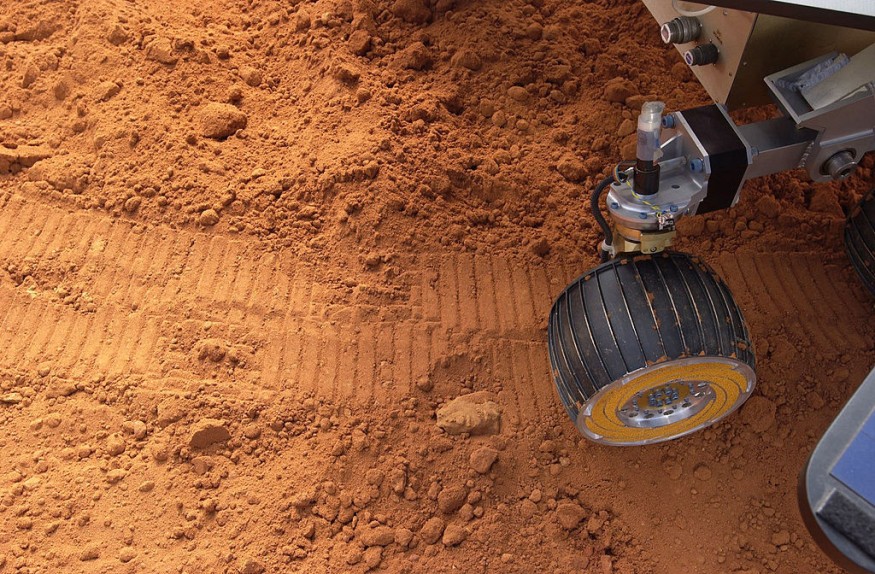NASA's Perseverance rover is set to land on Mars, as verified by the American Space Agency on Tuesday, February 16.

The rover, which launched this summer as the star of the agency's Mars 2020 mission, would touch down on February 18 in Jezero Crater, an ancient delta on the Martian floor.
Both navigation evidence shows that it is right on course to intersect Mars in time and space at the expected moment.
"Perseverance is [working] perfectly," Jennifer Trosper, Perseverance deputy project manager at NASA's Jet Propulsion Laboratory in California, said during a news conference per Radio.com.
And, of course, on Feb. 18, you will observe the landing day itself. NASA will provide the case with live coverage starting at 2:15 p.m. EST (1715 GMT). You can view it live on YouTube directly from NASA TV.
Seven Minutes of Terror
This is one of NASA's most notable endeavors, the first nine-year multibillion-dollar Mars mission and the first step of a three-mission program to bring Martian soil samples to Earth. Just days following China and the United Arab Emirates entered Mars and went into orbit, the American rover is ready to land.
Workers are enthusiastically awaiting the "seven minutes of terror" to get through and land the spacecraft safely.
Trosper, who served on all five rover projects, told Space.com more about the anticipated landing. The organization has "no guarantees" and that this time they have to brace for anything Mars could bring at them.
The Washington Post said the Perseverance spacecraft, launched from Earth at the end of July, is scheduled to hit Mars on Thursday at 12,000 miles per hour in what corresponds to a managed collision.
Trosper said the rover is moving close to the Red Planet, some 125 million miles (201 million kilometers) from Earth and less than 595,000 km (370,000 miles) from Mars. Through a simulated simulation of the trip here, you will track the spacecraft as it nears the Earth.
ALSO READ : NASA Perseverance Mars Rover Landing a Must-See; More Missions to Arrive in February 2021
How Will NASA's Perseverance Rover Land on Mars?
The engineers will need to pull off the entry, descent, and landing (EDL- process. The EDL needs a heat shield, a parachute, rocket propellers, and a sky crane that eventually drops the rover to Mars. It is the most challenging phase of the project, full of potential for aerospace engineers to call "a bad day." All these items have to function with exquisite consistency and totally separately.
The landing of the rover this time would be different in two main respects. Next, more sensors are involved because it would be more physically pleasing. Engineers would get several perspectives of what the rover is doing when it arrives on Mars (with a time gap owing to the 11 minutes it takes for transmission to hit Earth at the speed of light).
Second, this is a far more challenging goal. The equivalent of a large vacant parking area, Interest landed on flat terrain in 2012. Within Jezero Crater, a 30-mile-wide basin full of boulders, gullies, cliffs, and, most enticingly, the remains of an ancient river delta of sediments that scientists hope may provide signs of past existence on Mars, Perseverance may attempt to touch down.
As the spacecraft is approximately 2.6 miles above the Red Planet, the guidance system will step in: a black-and-white camera will snap photos, and the photographs will be compared to the range of maps loaded into Perseverance. On the preloaded satellite map, safe spots have been marked.
What Would Perseverance Do Again on Mars?
The Martian terrain will be investigated, and Perseverance will carry out a variety of scientific studies. Percy can gather samples from among its targets, launch the first helicopter outside Earth, and look for evidence of ancient existence from the sun on the fourth planet.
Its mission aims to scan past life indications and gather and prepare rock samples in the 2030s for return to Earth.
Science team member Bethany Ehlmann, a professor of planetary science at the California Institute of Technology, told BBC News that they are searching for microbial life on Mars.
To do this, NASA and the European Space Agency have placed together a multi-billion-dollar program.
In 2026, a smaller rover will be deployed to scuttle around Jezero to retrieve the sample tubes left by Perseverance.
These will be blasted into Mars orbit, where a spacecraft will intercept them and return them to Earth laboratories for definitive study.
Check out more news and information on Space on Science Times.












